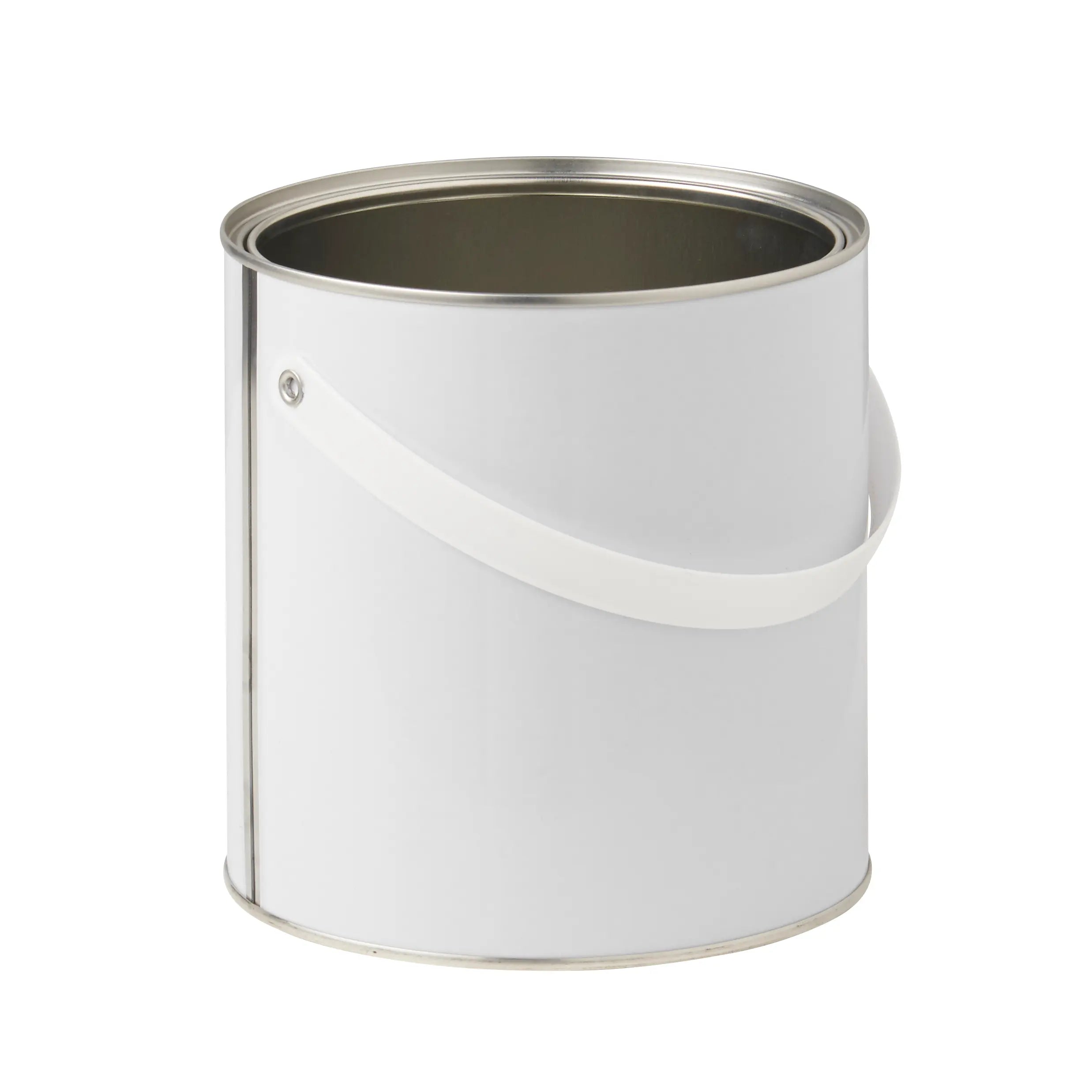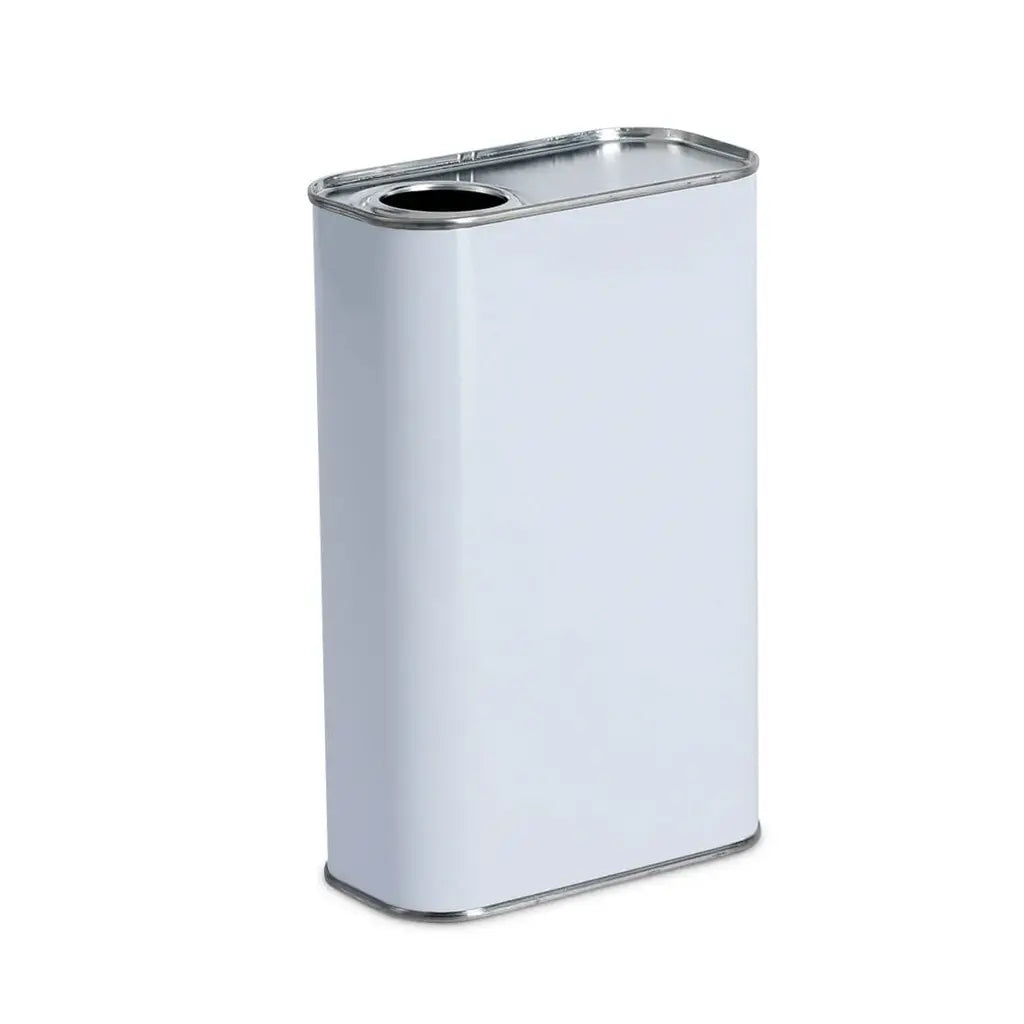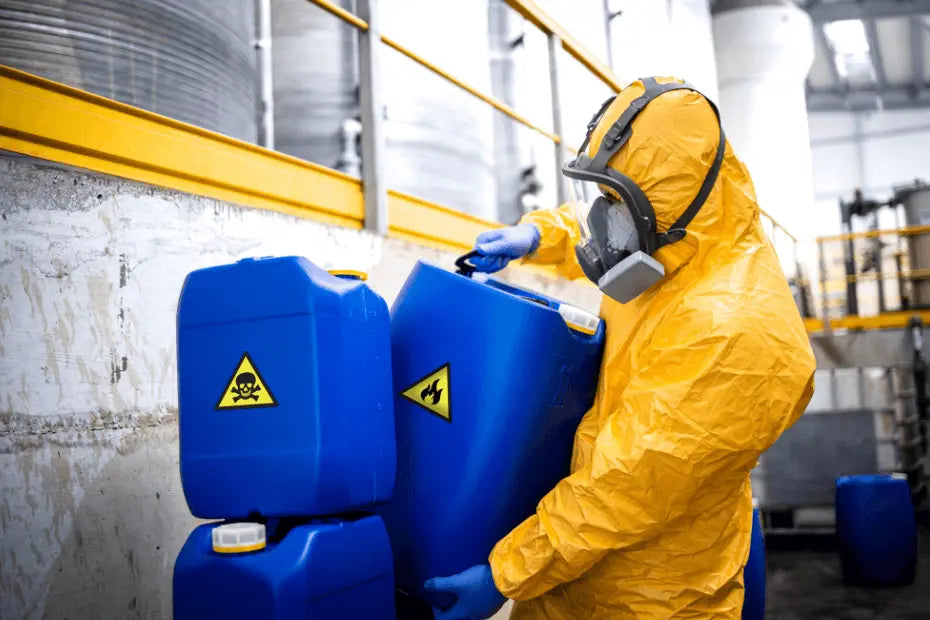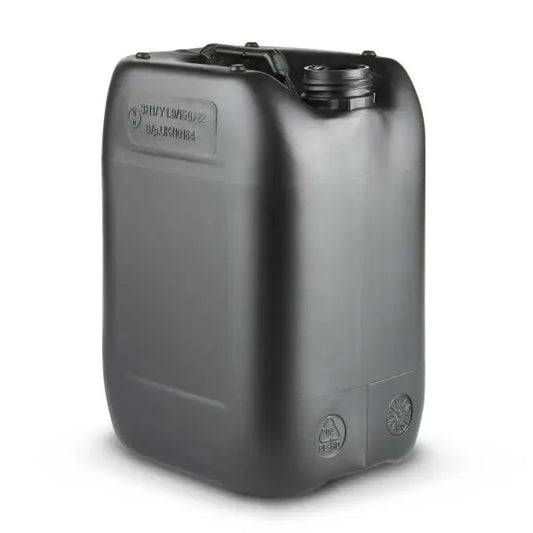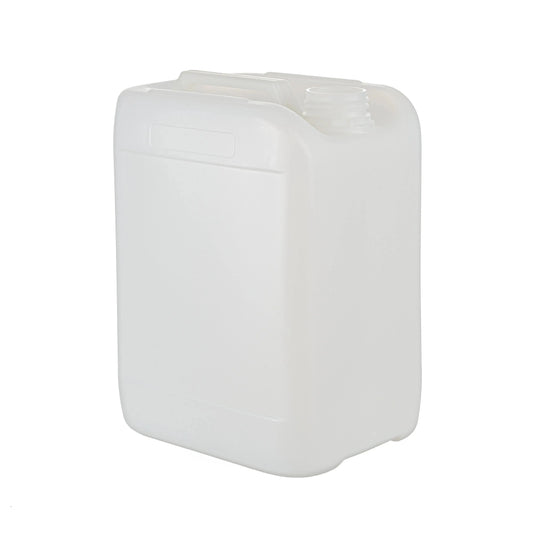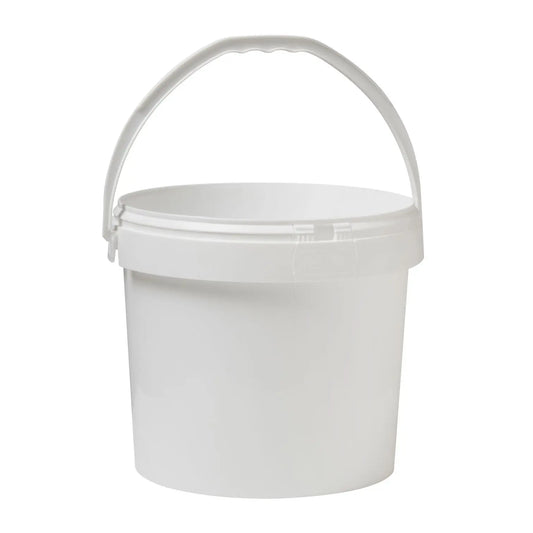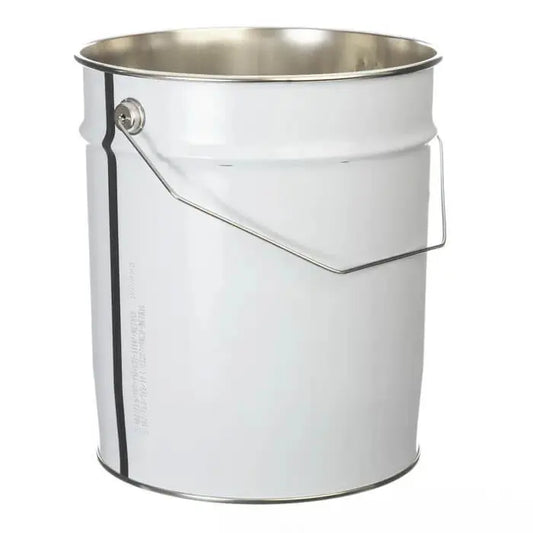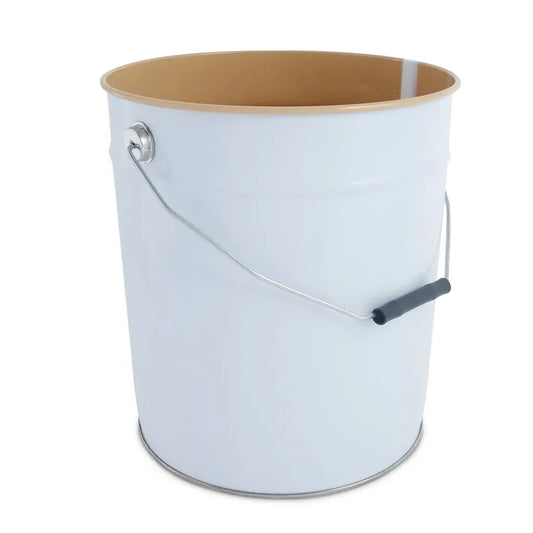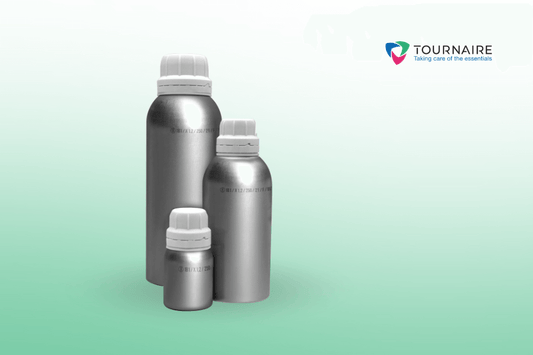How do you store chemicals that can kill? Flammable, corrosive, toxic, acidic, and even radioactive - chemical packaging has to contain the most demanding products. Packaging is the first line of defence against chemical leaks and contamination, which is why chemical storage is highly regulated.
Why Using the Correct Chemical Containers Matters
Chemical spills can harm the environment. Even a small chemical leak can cause serious ecological damage. Harmful substances are also hazardous to humans, which is why choosing the right container for the job is so important. Chemical labelling and packaging regulations are designed to minimise the risk of storing and shipping potentially dangerous products.
 Chemical packaging regulations includes labelling hazardous substances
Chemical packaging regulations includes labelling hazardous substances
Chemical Packaging Regulations and Compliance
Businesses that manufacture, import, store or supply chemicals in the UK must comply with the GB CLP chemical packaging regulations, as set out by the Health and Safety Executive (HSE). The requirements are determined by the specific risks and hazards of the chemical being contained, which include;
Classification compliance: The first criterion is whether a chemical is “hazardous”. This includes physical hazards (e.g. explosivity), health hazards (e.g. cancerous to humans) and environmental hazards (e.g. harmful to aquatic life). The supplier must then consider how likely and how serious the risk of harm is, using all available data and if necessary fresh scientific studies. More information can be found on HSE’s website.
Labelling compliance: The information that needs to be included on a label will depend on the chemical classification. Proper labelling is central to using chemicals safely. Hazard labels include specific symbols (or “pictograms”) and written warnings. The exact iconography and wording are set out in the ECHA guidance. Safety Data Sheets (SDS) that outline how a product should be stored and used, including any safety precautions must also be provided.
Packaging compliance: Chemical packaging has to pass an array of quality checks to ensure it will not leak or spill. UN approved chemical packaging includes HDPE and PP plastic containers, aluminium bottles, steel drums and tinplate cans.

Hazard labels alert people that the packaging contains a harmful substance
Types of Chemical Containers
There are different types of chemical containers available, suitable for storing and shipping chemical liquids and powders. All of the following are built for durability and are UN approved for chemical use.
UN approved jerry cans are available in a wide range of sizes and styles, including stackable and non-stackable versions. They are a practical option for cleaning detergents, automotive additives and hazardous liquids.
Standard plastic containers may not suitable for chemical storage because they can be susceptible to chemical erosion. The fluorination process changes the structure of the plastic, making it highly resistant to chemical degradation. Fluorinated plastic bottles and fluorinated jerry cans are UN approved for chemical storage.
Fluorinated bottles and jerry cans are lightweight, economical and regulation-compliant. This means they are a popular choice for storing swimming pool chemicals, fertilisers and agricultural chemicals.
Aluminium is a chemically inert material that is also puncture-resistant. Tournaire aluminium bottles are UN approved and offer a high level of protection for liquid chemicals, essences and additives. The System Plus closure system is engineered for a secure, leak-proof seal, and these types of bottles are also suitable for air-freight shipping.
Tournaire's System Plus closures are UN approved
Invopak’s heavy duty buckets are made from thick PP plastic, and they have a double-lock rim to provide an extra-secure lid seal. They can be a good option for storing powdered or granulated chemicals as well as pastes and raw materials.
UN Approved Tins made by Invopak
The rectangular 2.5 litre and 5 litre rectangular oil tins made in our Manchester factory are both UN certified. They are a popular choice for solvents, thinners and finishes.
Bulk Chemical Containers
The Control of Substances Hazardous to Health Regulations (COSHH) states that businesses should only store the amount of a hazardous substance necessary to complete tasks. And when it comes to flammable liquids, the storage limit is 250 litres. When it is necessary to store larger quantities of chemicals safely, the right container is the first line of defence.
UN approved plastic drums are designed for durability. They are made from thick HDPE plastic and have a push-fit lid with a metal ring latch closure that creates a water-tight, air-tight seal. They are ideally suited to storing powdered chemicals such as detergents and fertilisers. They are available in food-grade plastic and plastic tax-exempt recycled versions.
25 litre UN approved tinplate drums are available with either a berg or screw cap closure. The largest standard metal drum size is 210 litre, they are made of steel and can have a lacquered or plain finish. There are two closure types available; open top ring latch or tighthead bung. Steel drums are a practical option for liquids, oils and chemicals.
Each IBC tank can store 1000 litres of chemicals. They are UN approved and can be moved with forklifts and pallet trucks making them the best choice for transporting chemicals. They are available in food grade and recycled plastic options. IBC tanks are ideal when chemicals are needed onsite such as on farms and building sites that need easy access to fertilisers, feed additives or building materials.
IBC tanks have an information panel so that warning stickers can be displayed
Ensuring Safe Chemical Packaging and Storage
The HSE provide extensive guidelines for storing and transporting chemicals. The key safety measures include:
- Using UN-approved chemical containers for hazardous substances.
- Ensuring proper sealing and leak prevention.
- Following chemical labelling and packaging regulations for correct hazard communication.
- Storing chemicals in controlled environments
Using UN approved containers
UN approved containers should be used to store chemicals. The UN number will be stamped or embossed on the container for reference, and it will include details such as the year of manufacture and the packaging category. Find out more about UN approved packaging in this article.
How to ensure proper sealing and leak prevention when storing chemicals
Closures are just as important as containers when it comes to leak prevention. In standard containers, the closure is typically the point of greatest vulnerability. A cap could become unscrewed in transit, or a lid could become loose.
UN certified closures are different. They may come in two parts, like Tournaire's System Plus caps, or have a double seal, like our heavy duty buckets. UN certification will be granted to the container and closure combined. Using a container with a non-certified closure will mean the certificate is void.
What is GHS chemical labelling?
The Globally Harmonised System of Classification and Labelling of Chemicals (GHS) classifies and communicates key information about chemicals via the use of labels and safety data sheets (SDS).
These standardised symbols are designed to be easily recognisable and are a legal requirement when storing and shipping hazardous products. Labelling helps to warn users of any potential risks a product may pose, and helps ensure chemicals are handled and stored safely.

GHS hazard symbols make each danger easy to recognise
Storing chemicals in a controlled environment
Storing chemicals safely extends beyond the packaging. COSHH (Control of Substances Hazardous to Health) regulations require risk assessments and control measures to be put in place when dealing with hazardous substances. This can include the use of chemical cupboards, as well as storing materials at an appropriate temperature and with adequate ventilation.
Storing Chemicals Safely with Invopak
The right packaging is essential for storing chemicals safely and complying with packaging regulations. Invopak’s heavy duty rigid packaging options include UN compliant bottles, jerry cans, buckets, drums, barrels and IBCs, so whatever type of chemical storage you are looking for, we can help.
If you need advice or are interested in printed packaging, please get in touch, our experienced packaging advisors are here to help.
